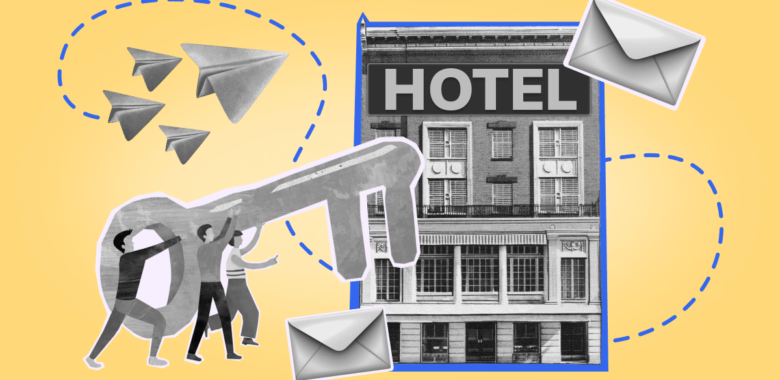Why email marketing is important for hotels
The pandemic was a survival challenge for the hotel industry. It caused profound and lasting changes that have reshaped the sector. Contactless services, flexibility in booking and cancellation policies, and transparent communication are now the keys to customer loyalty and successful accommodation promotion.
In the new reality, technology plays a critical role in the industry recovery. Email marketing with its high ROI of $36 for every dollar and wide automation opportunities is the channel hotel businesses must not ignore in their marketing strategy.
Emails are also great for providing customer care in the hospitality industry. For instance, short emails with reservation reminders and all the information a guest needs are super handy. And a targeted email campaign can become a powerful promotion tool for your business.
Nurturing customer relationships
Maintaining a strong connection with guests is crucial for marketing strategy in the hospitality industry. Loyalty, long-term relations, and staying top-of-mind will lead to repeated bookings. According to recent surveys, knowing customer segments inside and out becomes even more important for hotel promotion now. Travelers don’t want one-fits-all solutions: they prefer personal offers for their needs.
Email marketing opens great opportunities for automation, personalization, and customer segmentation to provide the best offer for every guest and grow conversion. Knowing their preferences and behavior is the key to tailoring personalized emails that will lead to bookings.
Driving direct bookings
Email marketing is a perfect fit for marketing strategy in the hotel industry. Numbers confirm it — emails in the niche reach an average 22.48% open rate, and the average clicks reach 1.61% in Canada and the United States.
Even non-targeted emails increase website visits and bookings. A targeted email campaign with personalization can give your hotel even higher chances to get direct bookings. Since people are exhausted and experience decision fatigue, they’d be happy to receive a personal offer they were looking for and not have to browse through dozens of options.
Still in doubt? According to a recent study, 61% of consumers are willing to spend more with companies if they offer a customized experience. So, your hotel business can drive 40% more revenue from personalization than your competitor who ignores it.
Promoting special offers
Special offers are great for growing loyalty. Why not grant your guest one after the checkout? A thank you email with a special offer for the next visit is great for the occasion. Again, a high email CTR means higher booking chances.
Another good example is seasonal deals. When the seasonal demand is up, lure guests with last-minute deals and great prices. And when it goes down, encourage your potential customers to book a room at your place with some delicious bonuses. For example, you can offer a free meal on their first night or a free upgrade upon booking.
Overall, emails are great for spreading the word about your special offers. Even better, a targeted email campaign for your offer promotion is a surefire way to boost reservations.
Enhancing guest loyalty
Building a long-term relationship is the strategy that will bring your guests back. Email marketing lets hotels keep in touch with the guests all year round so they make a reservation for their next vacation without doubt. As always, it’s great to bring value first and not limit yourself to sales pitches.
The most obvious and effective topic for an email targeting guest loyalty is your hotel’s loyalty program promotion. Cashback, points, and rewards are great for making your guests come back. And emails are great for promoting your loyalty program.
For example, this loyalty program email from Booking.com promises more wonderful travel experiences to gain with Genius bonuses.






















